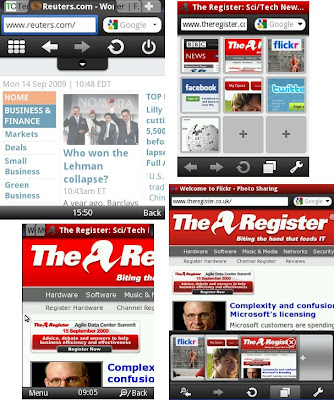
Source: Informa Telecoms & Media, WCIS+, June 2009
Via: 3G Americas Whitepaper, HSPA to LTE-Advanced: 3GPP Broadband Evolution to IMT-Advanced (4G)
Latest News and Information on 4G, 5G, 6G, and other Wired & Wireless Technologies in General.




 [Shenzhen, China, 1 September 2009] Huawei, a leader in providing next-generation telecommunications network solutions for operators around the world, today announced that it has been granted 147 Long Term Evolution (LTE) patents by the European Telecommunications Standards Institute (ETSI), representing 12 percent of the total existing 1,272 LTE patents assigned by ETSI as of August 2009. The patents granted were across several key LTE sub-sectors, such as physical-layer air interface, radio resource management and connection management.
[Shenzhen, China, 1 September 2009] Huawei, a leader in providing next-generation telecommunications network solutions for operators around the world, today announced that it has been granted 147 Long Term Evolution (LTE) patents by the European Telecommunications Standards Institute (ETSI), representing 12 percent of the total existing 1,272 LTE patents assigned by ETSI as of August 2009. The patents granted were across several key LTE sub-sectors, such as physical-layer air interface, radio resource management and connection management. 
The following are some of the important observations and conclusions of the report:
With a customer base of 4 billion connections today, the GSM family of technologies is available on nearly 800 networks in 219 countries worldwide. Building on this base, UMTS-HSPA – the world’s dominant mobile broadband technology today – has proven to be the most widely deployed and adopted 3G technology of all time, with more than 352 operators in various stages of deployment, including 277 commercial HSPA networks in 116 countries.
The white paper explains the tremendous opportunity afforded to GSM-HSPA operators via the 3GPP roadmap to HSPA+. While OFDMA systems such as LTE and WiMAX have attracted a great amount of attention, evolving HSPA to exploit available radio technologies can significantly enhance its performance capabilities and extend the life of sizable operator HSPA infrastructure investments. Techniques include advanced receivers, MIMO, Continuous Packet Connectivity, Higher-Order Modulation and One Tunnel Architecture, many of which are included in the standardization of 3GPP Release 7 and Release 8.




